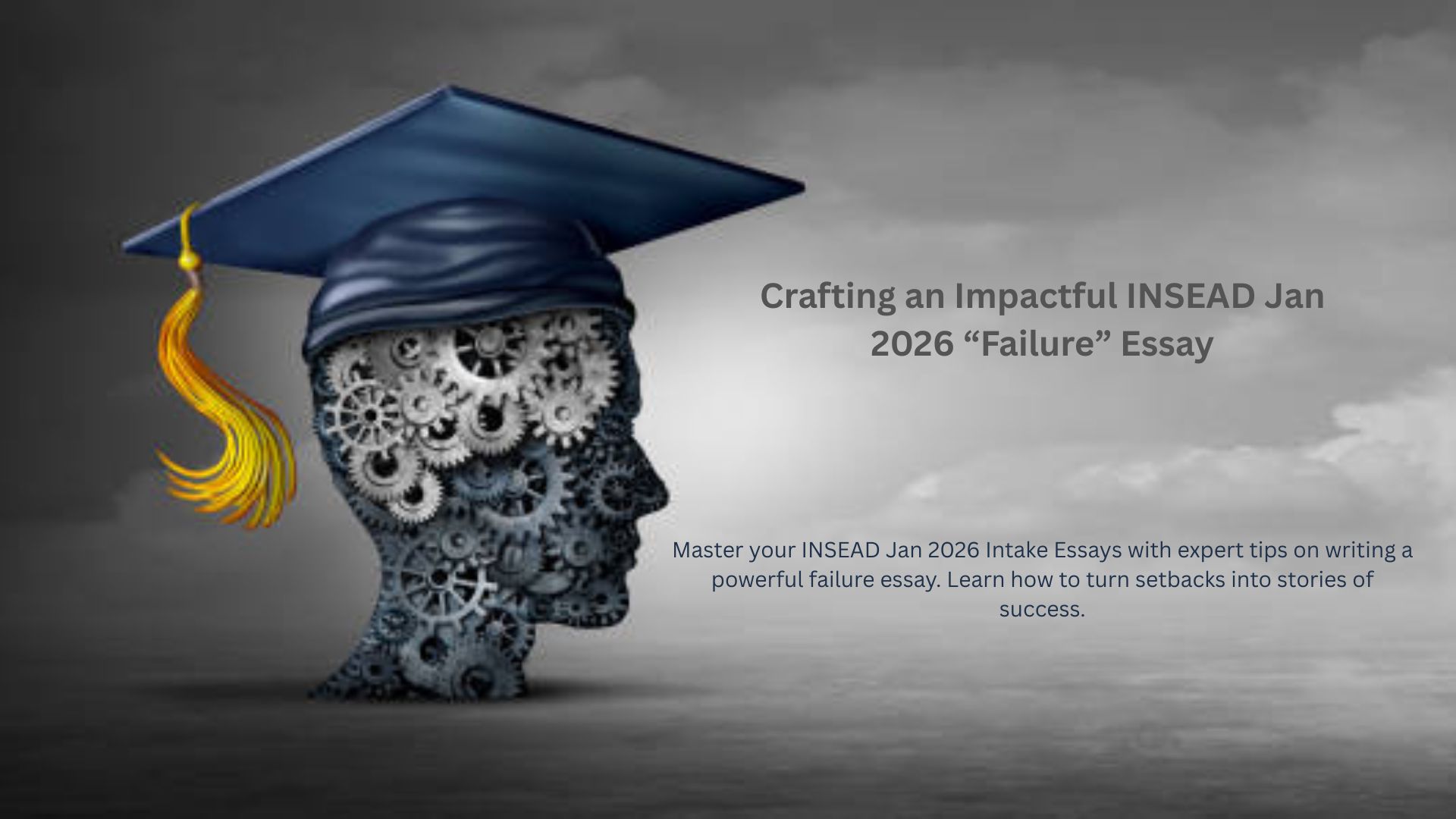
Applying to one of the world’s most competitive business schools requires more than just excellent grades and impressive work experience. The INSEAD Jan 2026 Intake Essays play a pivotal role in helping admissions officers understand your personality, values, and potential for leadership. Among these, the “Failure” essay often proves to be the most challenging—and the most revealing.
If you're preparing for the INSEAD Jan 2026 Intake, crafting a compelling failure essay could be your opportunity to showcase resilience, self-awareness, and personal growth. This article will guide you through the process of writing a standout “Failure” essay tailored for the INSEAD Jan 2026 Intake Essays, offering strategic advice grounded in storytelling and introspection.
Why the INSEAD “Failure” Essay Matters
INSEAD’s application process places a strong emphasis on emotional intelligence and the ability to learn from life’s challenges. The “Failure” essay is not designed to embarrass or disqualify you. Instead, it offers insight into your humility, honesty, and ability to evolve. The admissions team is looking for applicants who are introspective, accountable, and open to feedback.
Your response to failure speaks volumes about your leadership style and your capacity to grow through adversity—key traits that align with INSEAD’s global and fast-paced learning environment.
Understanding the INSEAD Jan 2026 Failure Essay Prompt
Though the wording may slightly vary each year, the typical prompt reads:
“Describe the biggest failure you have experienced. How did you handle it and what did you learn from it?”
When addressing this prompt as part of your INSEAD Jan 2026 Intake Essays, your goal should be to demonstrate your growth mindset. Focus less on the mistake itself and more on what it taught you. Avoid justifying the failure or blaming external circumstances. Instead, emphasize how the experience shaped your personal and professional journey.
Step-by-Step Guide to Writing a Powerful INSEAD “Failure” Essay

1. Select the Right Failure Story
Not all failures are created equal. Choose an example that had significant consequences and involved you taking personal responsibility. The best stories are ones where:
- The failure resulted from a decision you made.
- It challenged your assumptions or forced personal change.
- It contributed meaningfully to your growth.
Avoid cliché failures like missing a deadline unless they led to a deep realization or transformation. The admissions committee has read thousands of similar stories—your goal is to stand out.
2. Be Authentic and Vulnerable
Your INSEAD Jan 2026 Intake Essay is not the place for bravado. Avoid spinning your failure into a disguised success. INSEAD values genuine applicants who are not afraid to show their imperfections.
Admitting failure—especially in a high-stakes situation—requires emotional maturity. Share your initial emotions, doubts, and how you processed the experience. Vulnerability makes your story relatable and powerful.
3. Highlight Your Learning Curve
The heart of the failure essay lies in what you learned. Ask yourself:
- What did I realize about myself?
- How did this change my decision-making or behavior?
- What would I do differently now?
Demonstrating how the failure influenced your future actions shows that you're a reflective learner—an attribute highly valued in the INSEAD Jan 2026 Intake.
4. Showcase Long-Term Impact
To make your essay resonate, connect the dots between your failure and your subsequent actions. How did this experience shape your leadership style, team management, or interpersonal skills? Did it influence your career choices or aspirations?
The admissions committee wants to see if you’ve internalized your lessons and applied them meaningfully. This also reflects your readiness for the intensive and collaborative MBA journey at INSEAD.
5. Stick to the Word Limit and Structure
INSEAD essays are concise, so your failure story should be crisp, clear, and structured logically. Use a basic narrative arc:
- Introduction – Set the context.
- Conflict – Explain the failure.
- Climax – Detail the moment of realization.
- Resolution – Share the lessons learned.
- Impact – Highlight how it changed you.
Remember, clarity and flow matter just as much as the content itself.
Common Mistakes to Avoid in INSEAD Essays
- Over-Dramatizing or Underplaying
You don’t need a Hollywood-style disaster to make an impact. Conversely, don’t pick something too minor. Choose a story that feels human and significant to your journey.
- Blaming Others
Taking full ownership of your actions shows leadership maturity. Avoid deflecting blame or making excuses.
- Recycling Generic MBA Essay Content
Each school has its own culture. INSEAD values international exposure, adaptability, and emotional intelligence. Tailor your essay specifically for the INSEAD Jan 2026 Intake—generic essays won’t make the cut.
Integrating the Failure Essay into Your Overall Application
The “Failure” essay is only one part of the broader INSEAD Jan 2026 Intake Essays, but it should complement the themes you’re building across your application. If your other essays focus on achievements, leadership, or global exposure, this essay can act as a balancing force—showing the other side of your personality.

Your goal is to present yourself as a dynamic, well-rounded individual. Let this essay add depth to your profile.
Final Thoughts: Make Your Setback Your Strength
Crafting a great failure essay isn’t just about showing where you went wrong—it's about proving how far you've come. When writing for the INSEAD Jan 2026 Intake Essays, your authenticity, introspection, and ability to translate setbacks into future wins can set you apart from thousands of applicants.
Remember, the admissions committee isn’t judging the failure itself—they’re evaluating your response to it. Be sincere, stay grounded, and most importantly, show them that you’re ready to embrace the challenges and opportunities that INSEAD offers.
Let your failure be the cornerstone of your transformation. Because at INSEAD, leaders aren’t born—they are made through challenge, introspection, and growth.